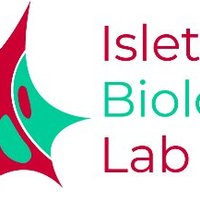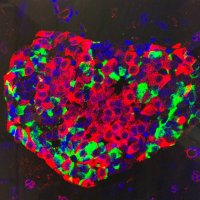
The Human Pancreas Analysis Program - HPAP
@thehpap
The Human Pancreas Analysis Program (HPAP) - Dedicated to better understanding Type 1 and Type 2 Diabetes
ID: 1246100258964242433
https://hpap.pmacs.upenn.edu 03-04-2020 15:40:38
213 Tweet
581 Followers
79 Following

A review of progress in cell replacement therapies for #T1D #diabetes #stemcells #islets Nature Reviews Endocrinology nature.com/articles/s4157…


AnnoSpat annotates cell types & quantifies cellular arrangements from spatial proteomics ft. Aanchal Mongia, Noah Burget, Yeqiao Zhou 周叶峤, R. Babak Faryabi (Penn Path & Lab Medicine/ Penn Epigenetics), Yue Wang, @KlausKaestner & Golnaz Vahedi (Penn Genetics) & Ali Naji (Penn IDOM) tinyurl.com/3ffj3rey




Yi and Eizirik re‐analyzed scRNA‐seq data from The Human Pancreas Analysis Program - HPAP database to further investigate the β‐cell stress signatures (e.g, inflammation, autophagy, apoptosis, and ER stress) potentially present in individuals living with #type1diabetes and #type2diabetes. onlinelibrary.wiley.com/doi/10.1111/17…

This Thursday 12/12 come join us for Carmella Evans-Molina Dr. Carmella EvansMolina on ER regulation of beta cell function!


G6PC2 controls glucagon secretion by defining the set point for glucose in pancreatic α cells ft. Varun Bahl, Eric Waite @CatherineLeeMay Elisabetta Manduchi, Benjamin Voight Michelle Lee Mark Tigue, Nicholas Manuto & @KlausKaestner (Penn IDOM/ Penn Genetics) science.org/doi/10.1126/sc…









Two new, NIH funded postdoc positions are available! (1) Somatic mutations as primary causes of autoimmune disease and (2) Epigenetic drivers of diabetes in humans - please send CV and names of references to: [email protected]

🚨New work from our lab with important clinical implications. Thanks to our collaborators in The Human Pancreas Analysis Program - HPAP. Spatial transcriptomics from pancreas and local draining lymph node tissue reveals a lymphotoxin-β signature in human type 1 diabetes | bioRxiv biorxiv.org/content/10.110…





